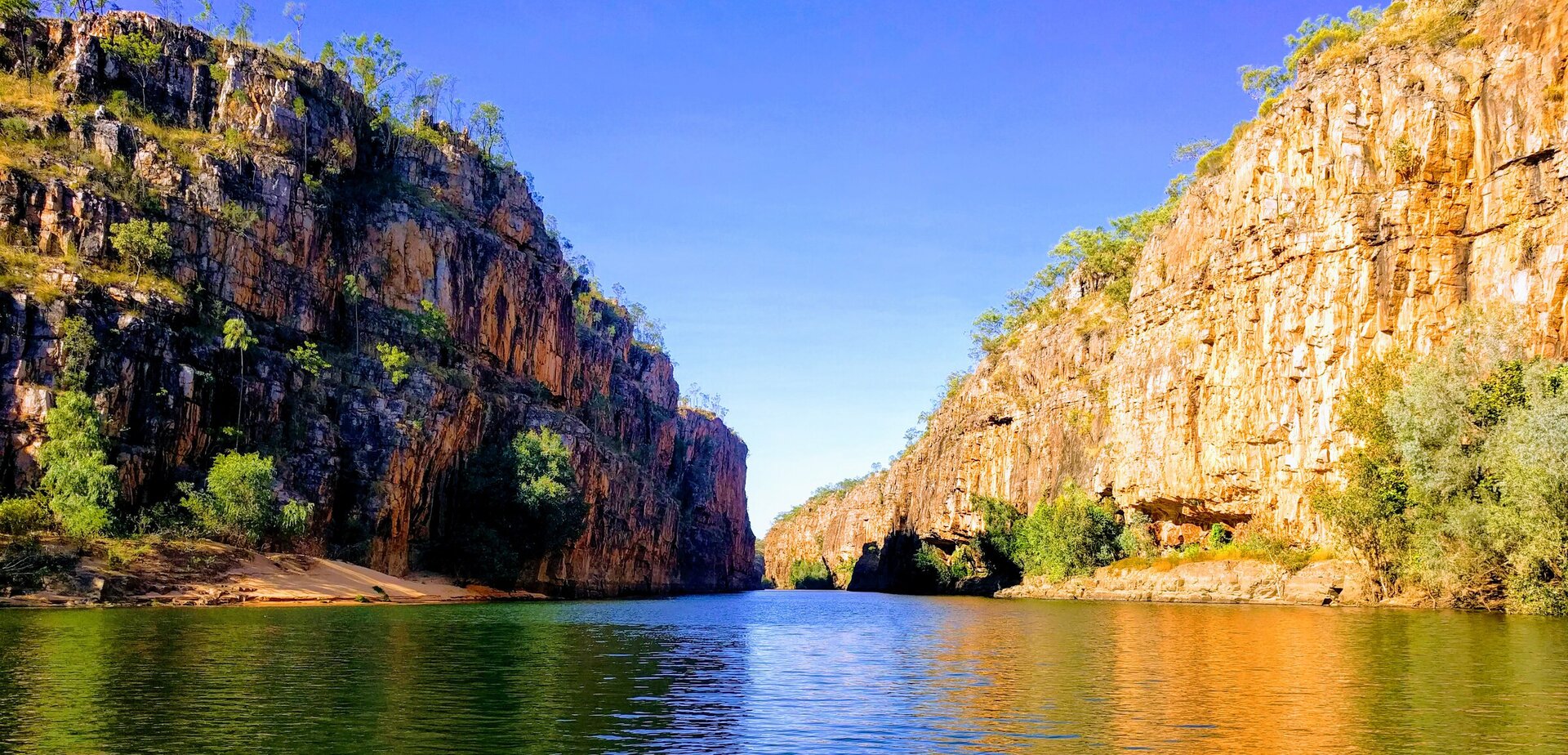What to pack for the Australian Outback.
The Australian Outback is truly one of the world's most amazing places. What looks like a deserted, sunburnt landscape has hidden wonders scattered throughout.
I have spent the last 32 years visiting the outback of the Kimberley region in North Western Australia, as I have had family living there in Fitzroy Crossing, Derby and Broome. I have seen so many incredible sights, and am extremely drawn to this region. I feel extremely privileged to have spent so much time here and seen things from a locals perspective.
But one place that had eluded me was the Gibb River Road.
This mostly unsealed road goes from Kununarra down to Derby - and it is legendary!
The words I would use to describe the Australian Kimberley Outback would be:
- Vast
- Massive
- Awesome
- Majestic
- Hot
- Red dirt
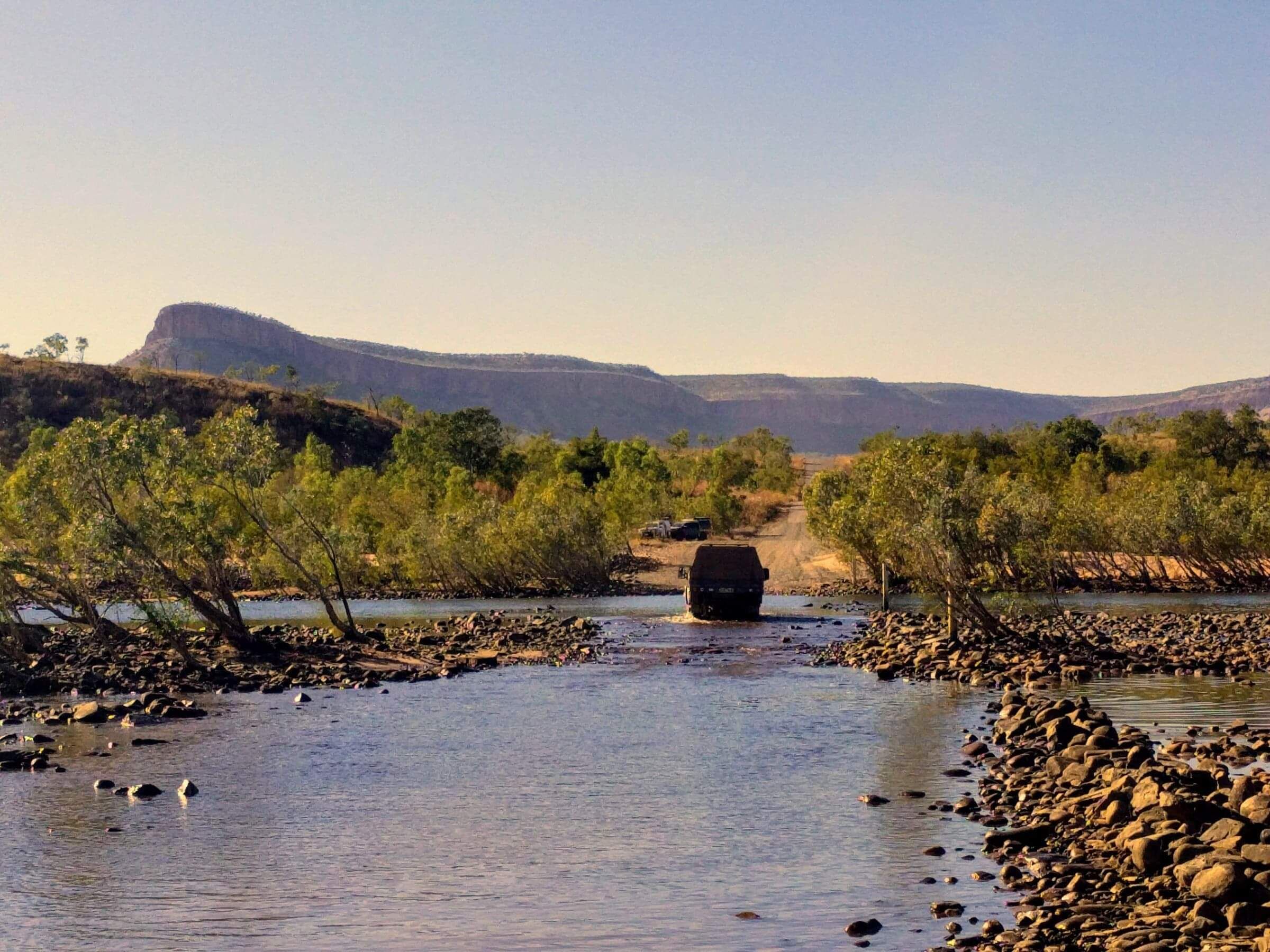
Crossing the Pentecost River, WA.
My 14 day trip on the Gibb River Road.
So for many years I had dreamt of driving down the Gibb River Road. The stories that have come from this route over the years have become folk-lore.
For anyone tackling this route independently, get prepared.
Staying at camping grounds we saw first-hand how well independent vehicles were set up. They had spare tyres, winches, water and fuel tanks, comprehensive first aid kits, tool kits and so much more.
So as a Kiwi, with limited outback experience I opted for a 14 day tour with the Broome-based company Kimberley Wild
This small group adventure was the perfect choice for me. All the safety issues were covered. I was going to see all the main attractions on this vast route. I would have the most amazing guides who were a font of knowledge on the indigenous people, their lands, their art, the flora and fauna, the history of the North-West. It was a phenomenal trip.
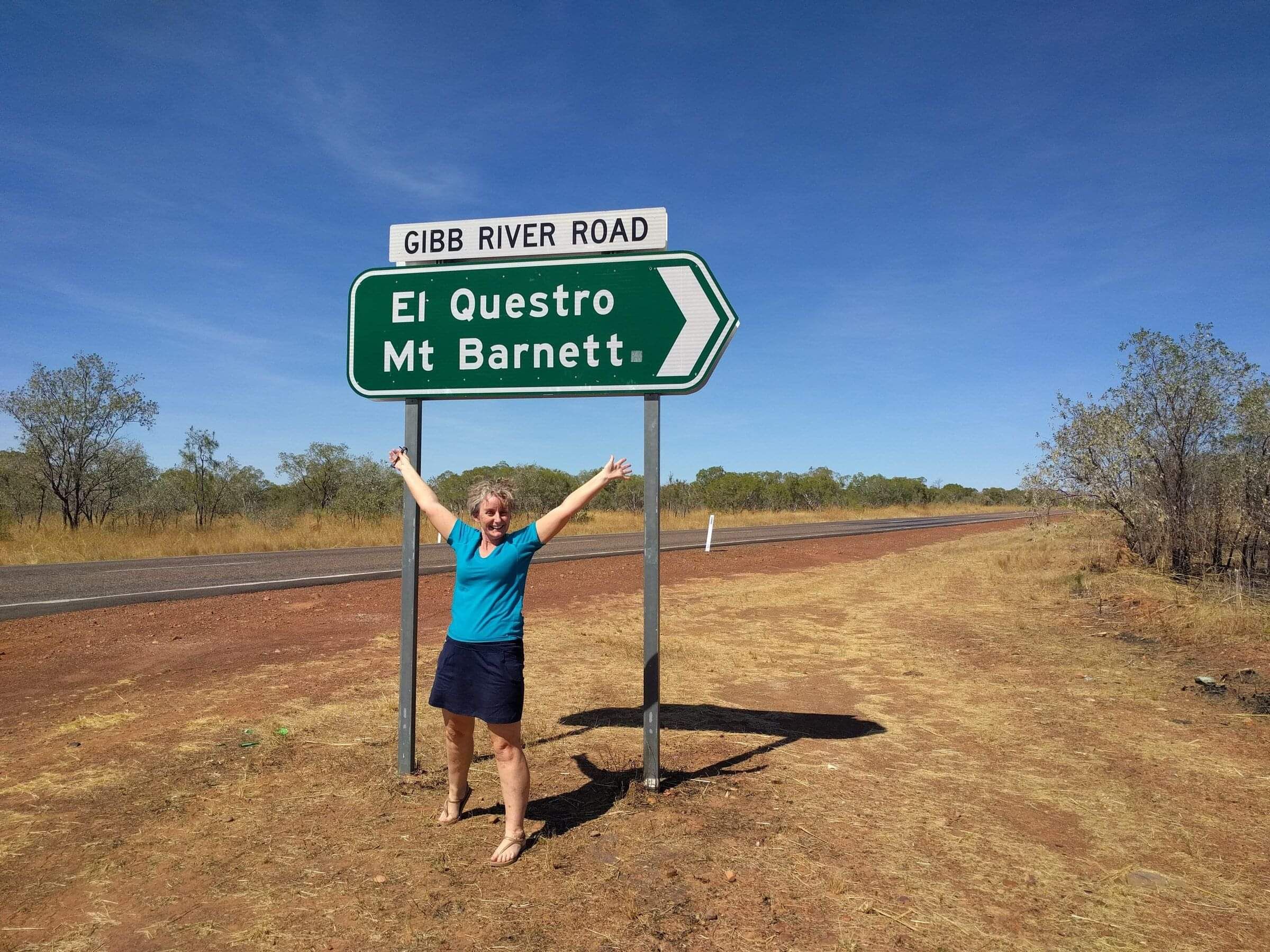
Finally here after all these years!
Packing for the Outback.
We were restricted to bringing under 15kg of gear (33Ibs). But as you can imagine I took much less than that. You'll see from my list I took much more than my usual 5kg, but you'll also see why.
This is what I packed for the Australian Outback trip:
- 3 merino tee shirts (I washed one each day and it dried overnight) - I now know that I could've easily got two or three days wear out of each one if I'd aired them!
- 1 pair of shorts, a pair of hiking trousers and a short merino skirt
- Puffer jacket
- Merino base layers - leggings and long-sleeved top
- Merino jersey
- Silk scarf
- Sunhat - mine was a cap with a detachable neck flap - but the bigger the hat the better!
- Sunglasses - essential
- A long sleeved Kathmandu shirt that was light-weight and breathable - I used it a lot for walking for sun protection.
- Hiking boots and jandals/aqua shoes for the Tunnel Creek cave and water experience - nothing else was needed
- Merino socks
- One long silk blouse for fine-dining... that never happened! But I did wear it once in Broome.
- Swimsuit.
- Towel.

Dark colours to disguise the red dirt that filled my gear!
The extras I packed - just in case.
Normally I travel with enough medication or dressings or first aid equipment to get me to a pharmacy. But packing for the outback is a completely different ball-game to normal travel destinations.
I'm not sure there are any pharmacies between Kununurra and Derby so I took plenty. The company carried their own first aid kit - and the guides are the most knowledgeable and prepared for emergencies of any kind.
So the extras I took:
- A bottle of moisturiser - seriously, I read this tip before I went - so glad I did - my skin soaked it up and would've been like sandpaper without it.
- Duplicates of my asthma medication - no chance of replacing it up there.
- Dressings for cuts
- Disinfectant cream - like betadine
- Antibiotics for chest infections, UTI's
- Drugs to stop vomiting and diarrhea
- Medication for thrush.
I pretty much imagined all the things that could go wrong and covered my bases.
So I ended up carrying about 6.5kg (14Ibs).
And I don't regret it at all. There was a lot more 'just in case' items, but when you are so remote, you don't take chances.
This was definitely a case to absolutely take what you need.
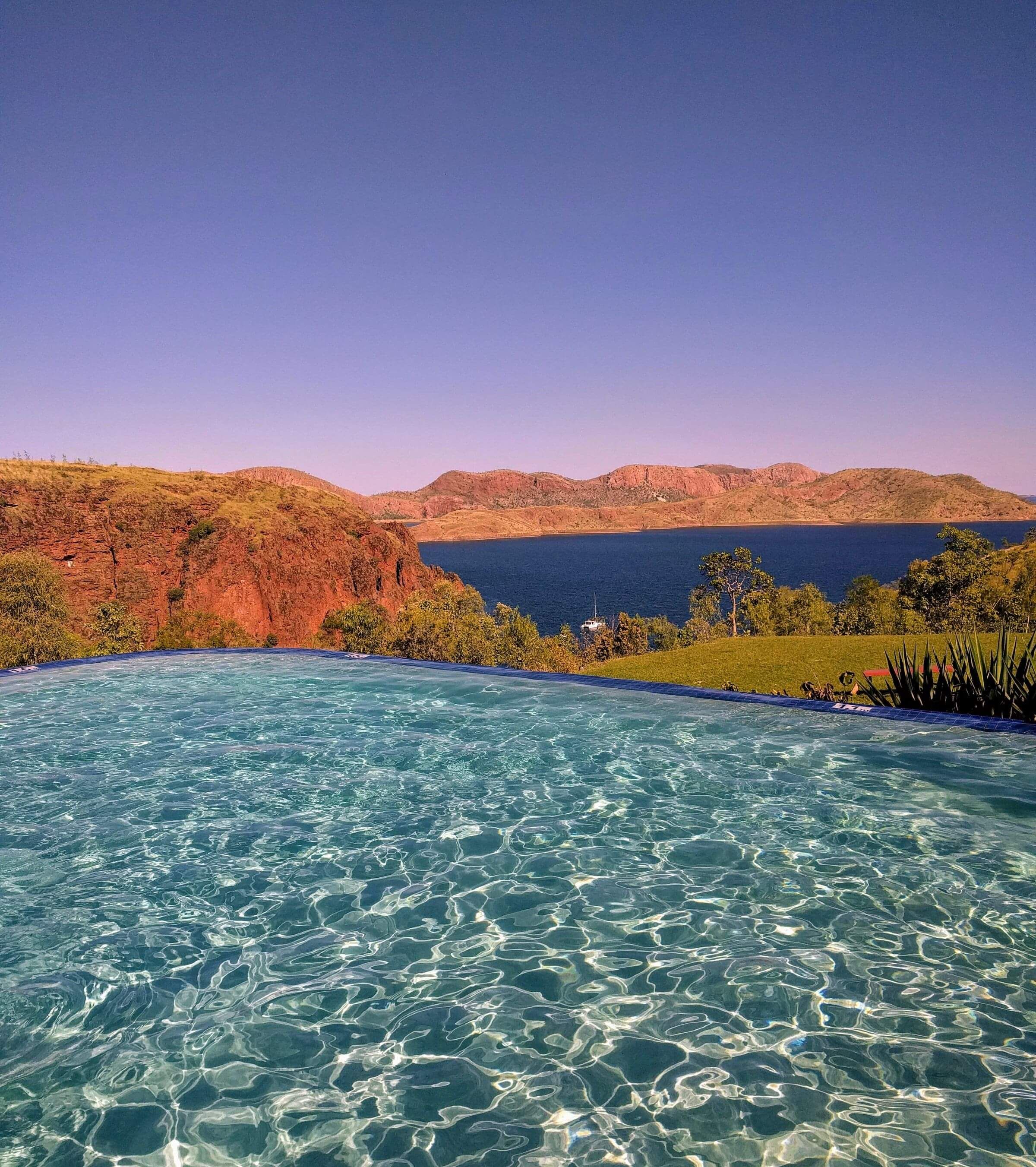
The infinity pool at the Argyle Dam camping ground...not enough superlatives to describe this spot!!!
The right gear for the right activities.
In the outback you are exploring. Hiking in heat and red dirt, swimming in pools below waterfalls, clambering over rocks.
It's an extreme environment and your clothes need to be able to stand up to this.
So, my biggest suggestion is - leave your white clothes at home!!!
My hiking shoes are still stained with the red dirt a couple of years later.
Even though it's the desert, and it's hot during the day, it does get cold over night. I wore my puffer jacket most evenings and in the early morning (we were up at 6am).
I was able to hire a sleeping bag while I was on the trip and after the trip they gave them to the local community to re-use. This was so much easier than me carrying a sleeping bag around that I didn't need for the rest of my trip.
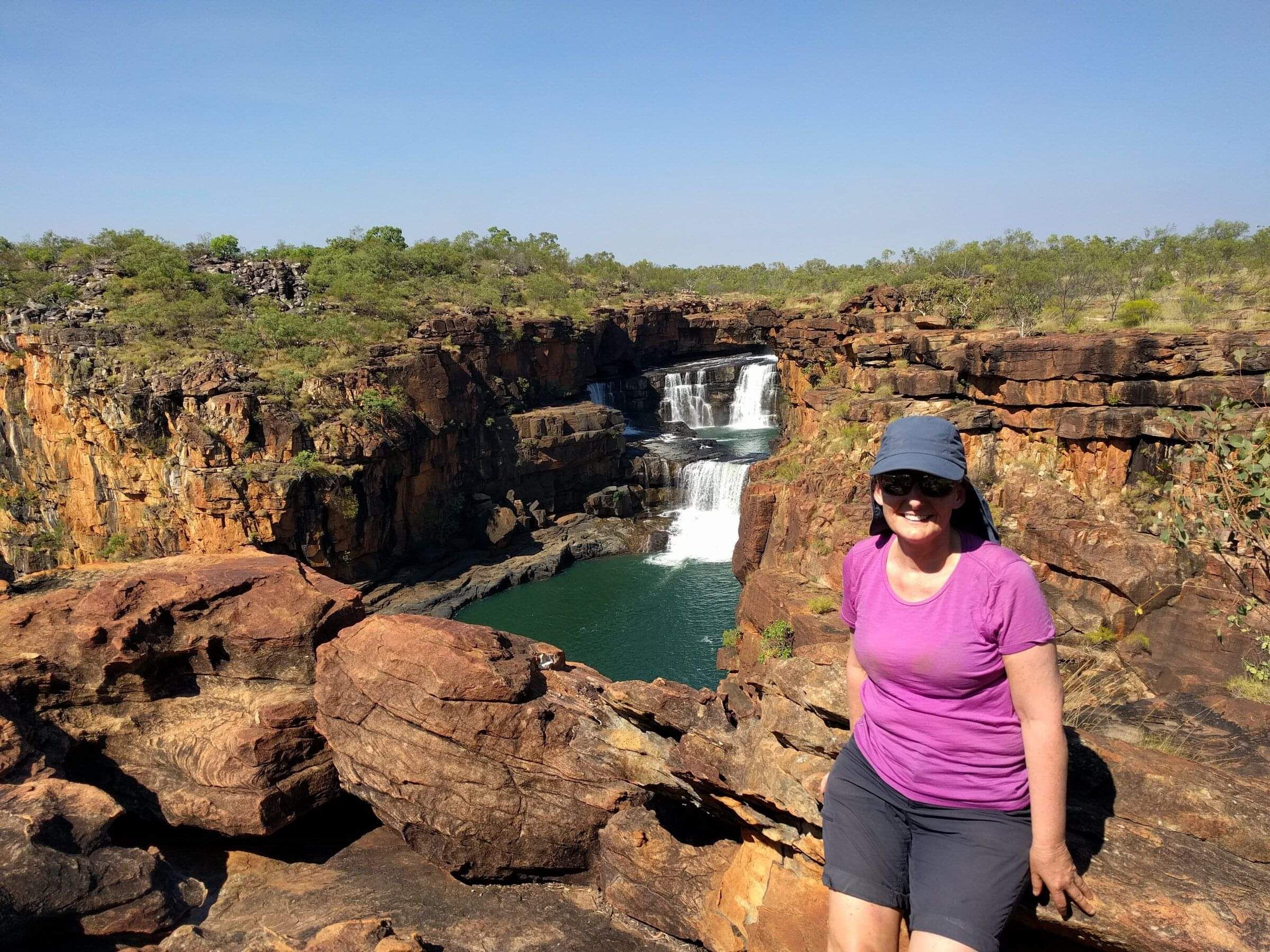
My clothes took a hammering on this trip. This is the stunning Mitchell Falls.
Camping life in the outback.
On this trip we slept in swags - canvas bags with a mattress and a pillow, and you slept inside this with your sleeping bag. I was toasty warm in the desert air.
We had tents that we set up each day, although you could pay extra for nicer accommodation like cabins, and glamping tents!
Dinner was cooked over a campfire - and this was a magical time seeing our guides cook with billies and camp ovens. We would spend this time talking around the fire, getting to know you fellow travel companions, share outback stories and lean back and look up at the sky filled with stars.
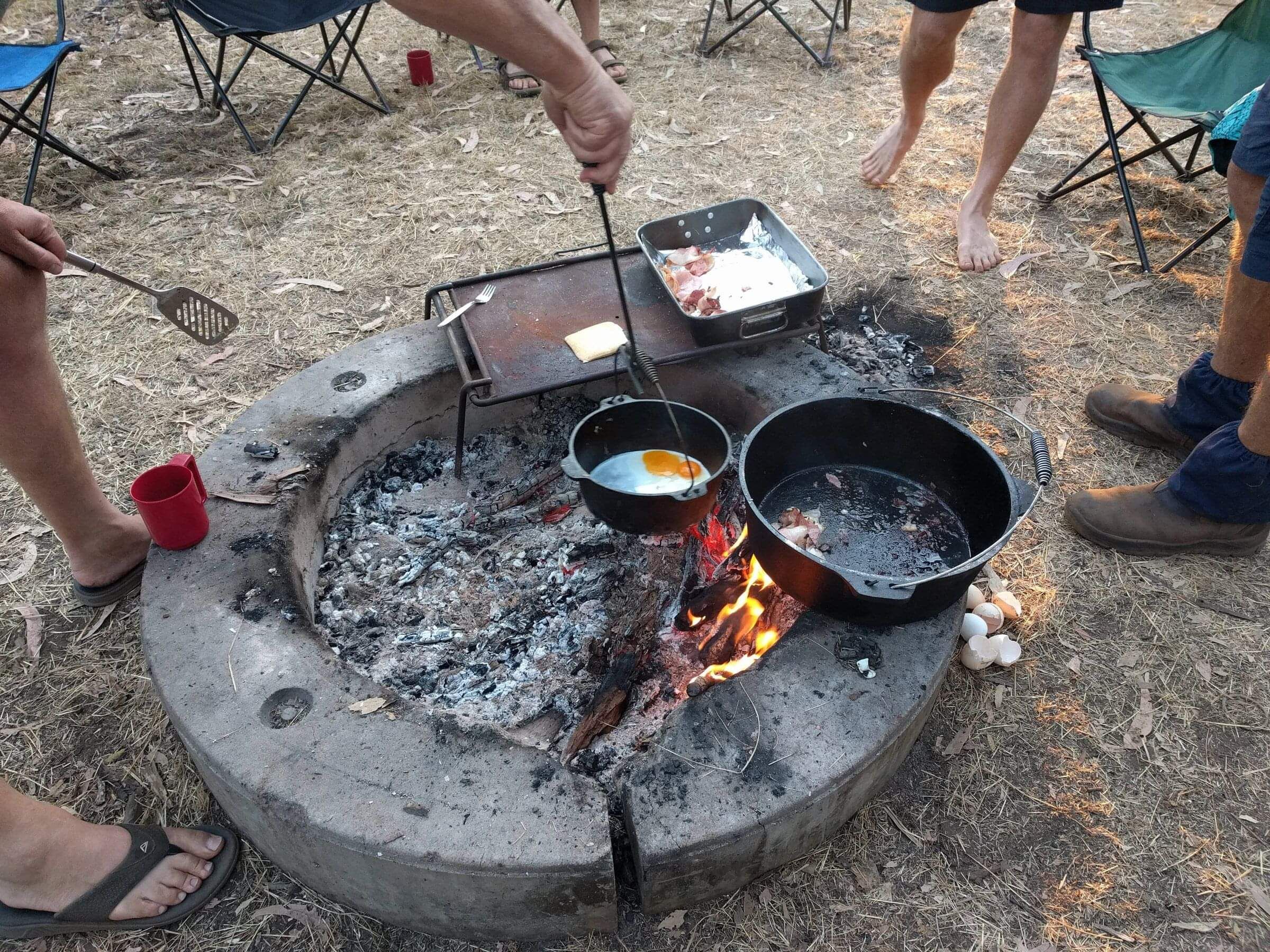
The campfire breakfast in full swing.
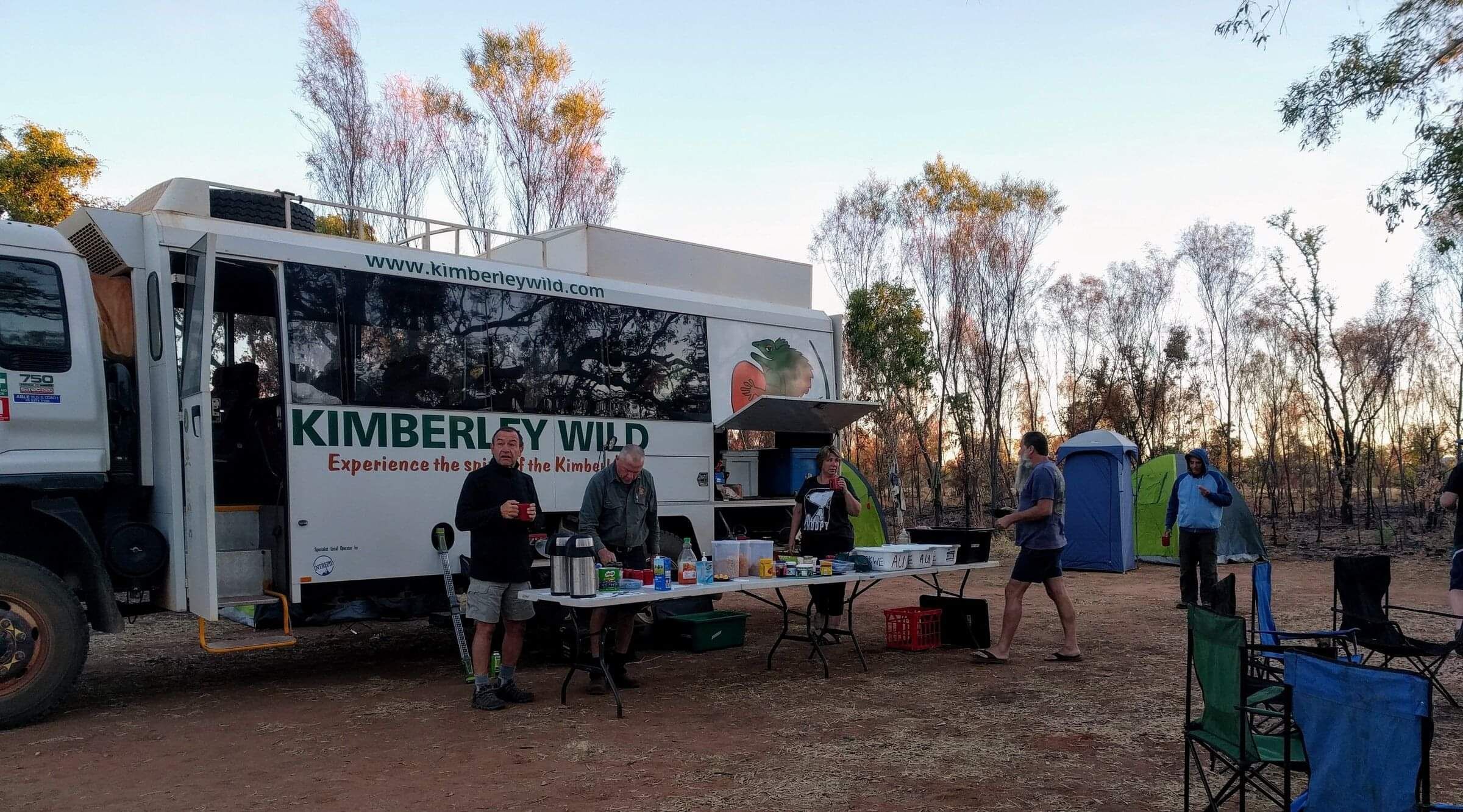
All set for dinner at Purnululu National Park.
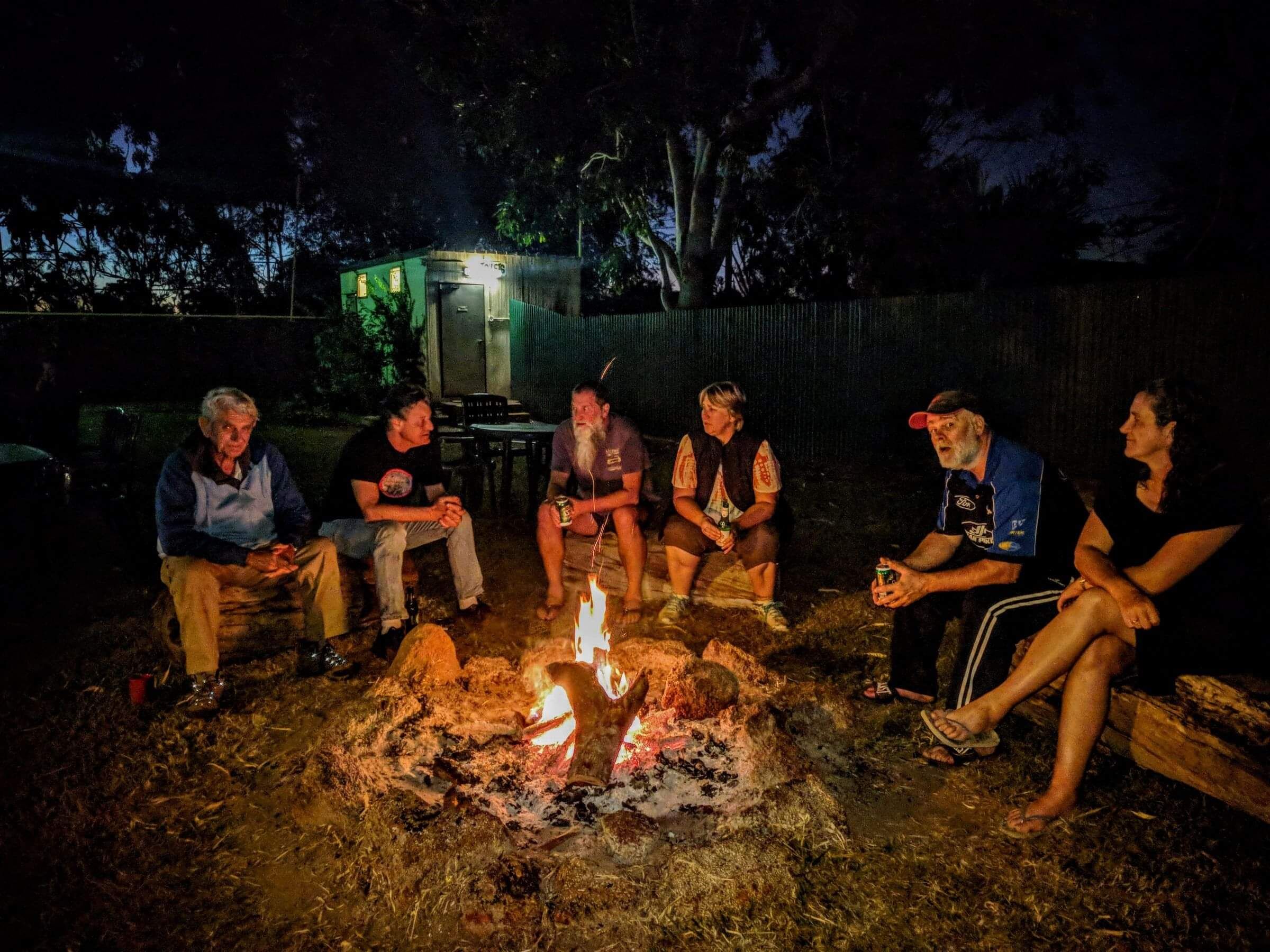
Plenty of banter and stories around the campfire.
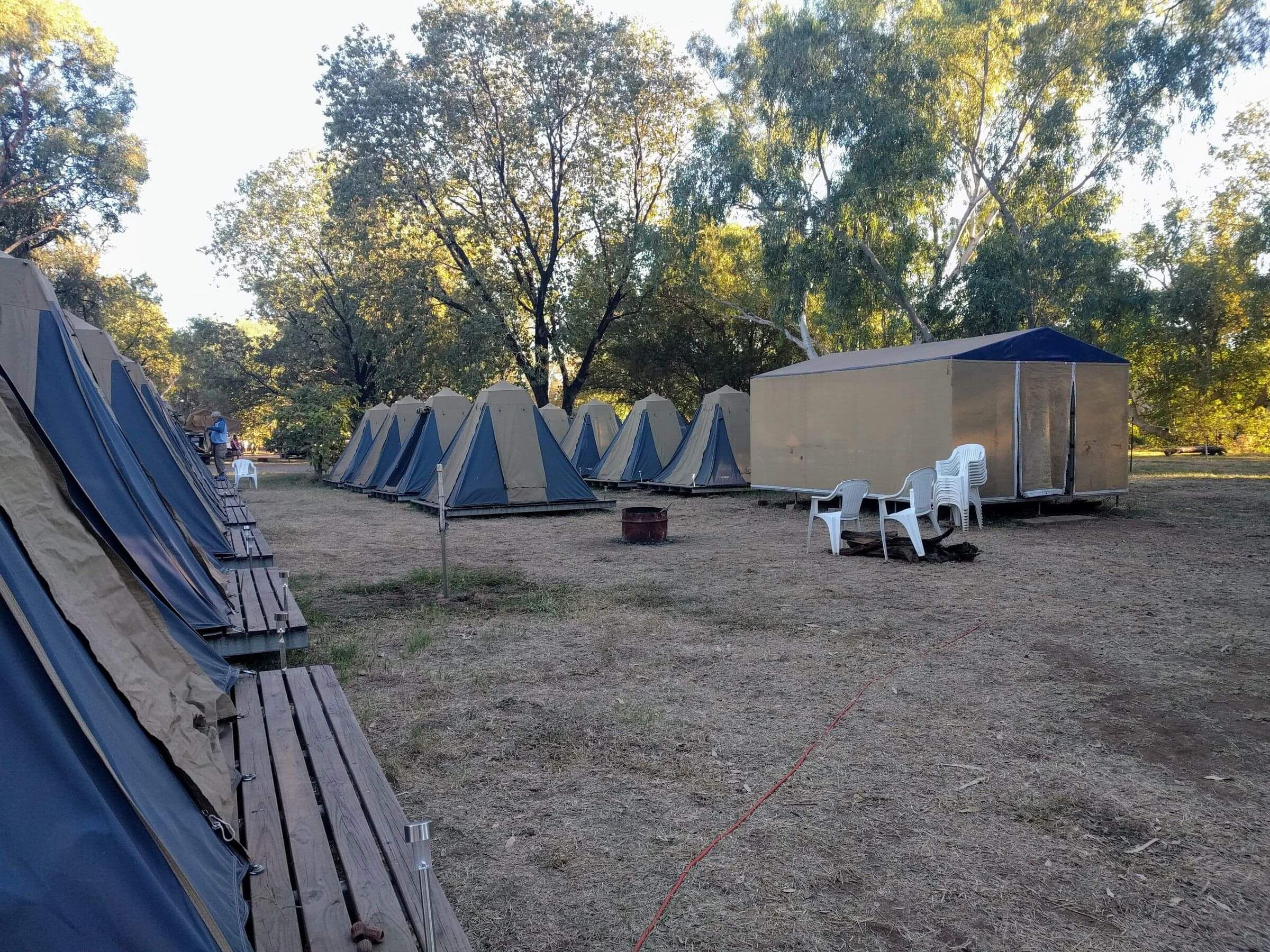
Spoilt - the tents were already set-up for us!
Life on the bus.
We had 11 travellers on the bus and two guides.
You travelled long hours on dusty, unsealed roads from one destination to the next. Entertainment is listening to the guides tell great stories, and chatting to the others.
It was on these long drives that we learnt so much about the outback and it's history.
We often had the opportunity to ride up front and see the rough roads ahead of us.
We stopped to collect firewood each day for our campfire, which always ended up with some hilarity.
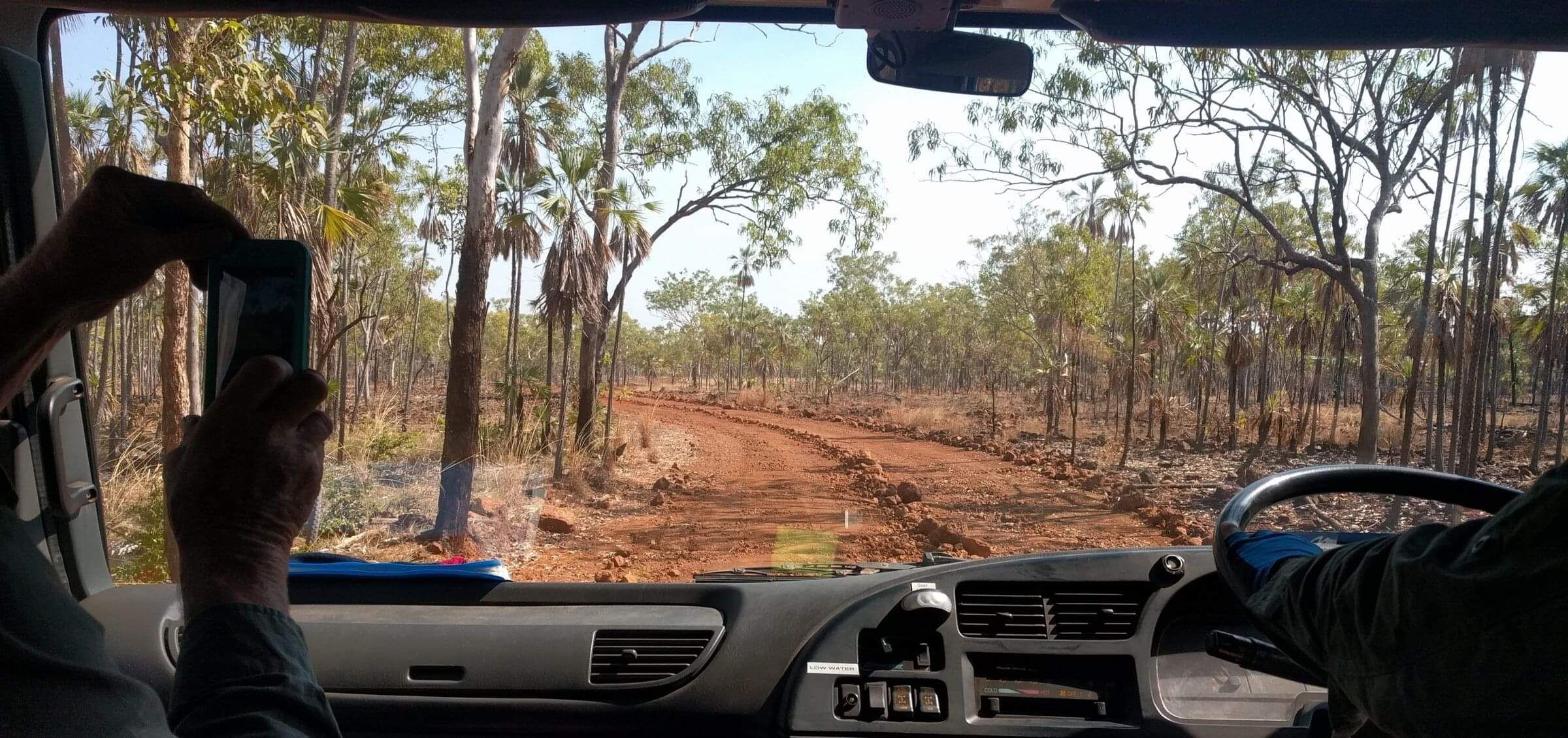
Rough roads, great drivers, all-terrain vehicles!
Keeping in touch in the Outback.
Keeping in touch is not always the easiest in the outback and you and your family need to be aware of this.
At some stages there is NO CELLPHONE RECEPTION for days! You really are remote.
I loved this and really enjoyed not having the distraction of social media. But you need to warn your family so they don't panic! I gave my family the contact details of the tour company as the drivers have a satellite-type phone, and the outback has it's own system for getting messages to people.
The outback community is very remote, but there is a closeness that is ever-present and they're always looking out for each other.
Otherwise there can be phones where you are staying - but not always.

The phone in the fridge - for real!!
Take your camera!
You won't have much use for a phone - but your camera will be working overtime!
From big sky country, to star-filled nights, colours that pop, and creatures that send you running.
There'll be waterfalls with an insurmountable amount of water and power, red cliffs, and ancient Aboriginal artwork.
There'll be ample opportunity to click away at all the marvels - you'll just have to wait until you're near Derby to be able to post online to friends and family. But they'll be well-worth waiting for.
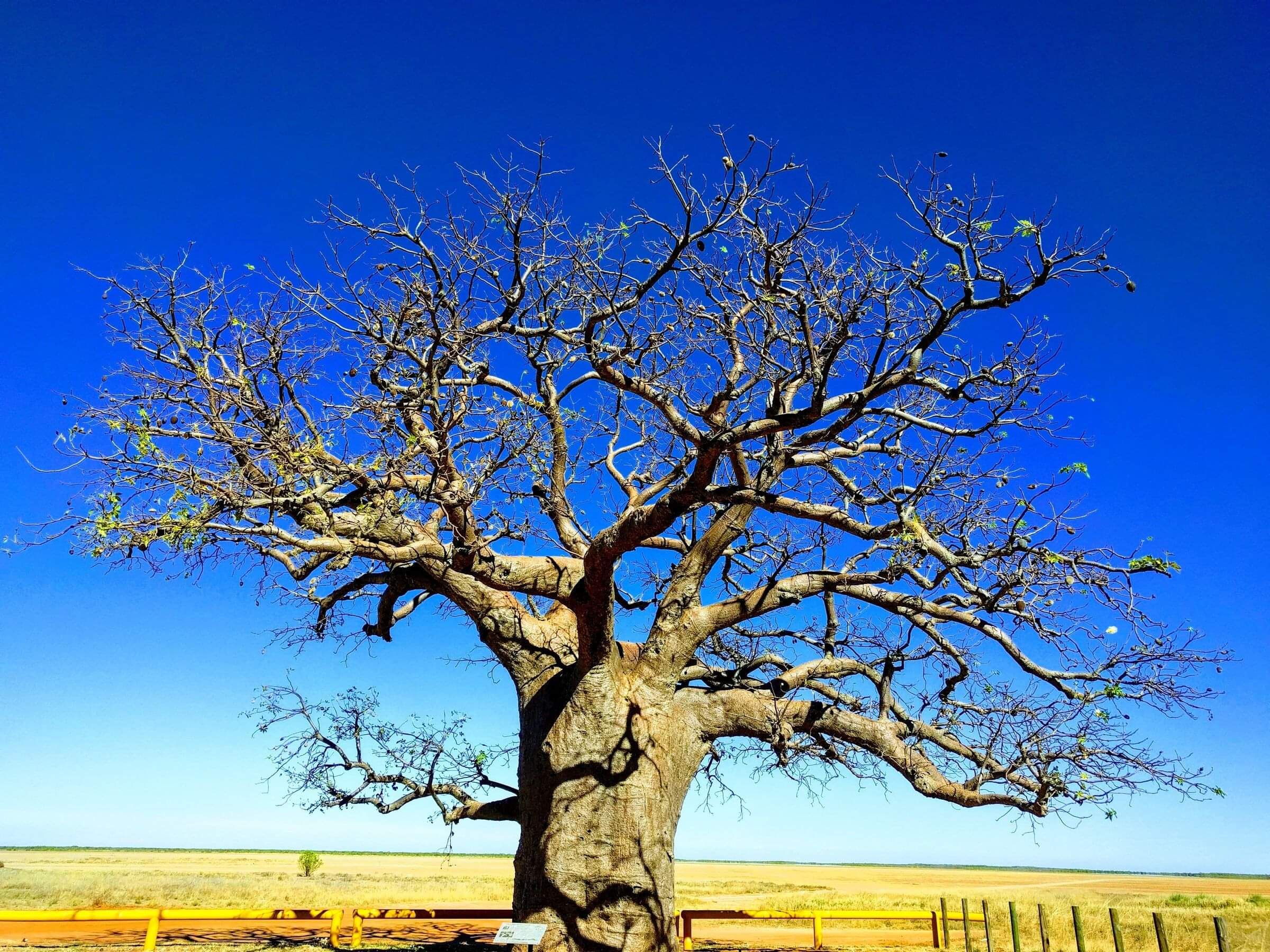
The amazing Kimberley Boab tree and the big sky landscapes.

Hiking in Purnululu National Park (Bungle Bungles).
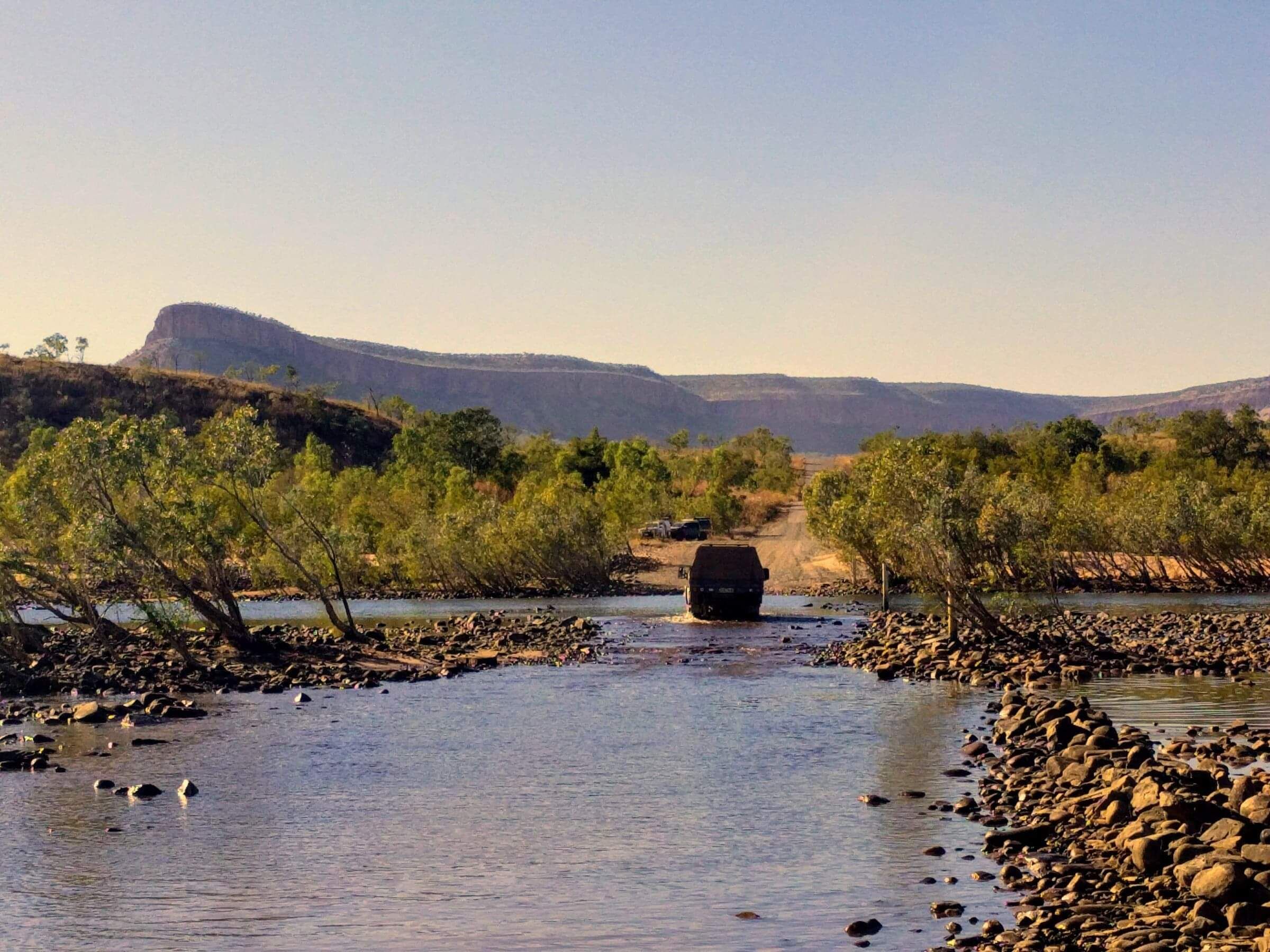
Crossing the croc infested Pentecost River.
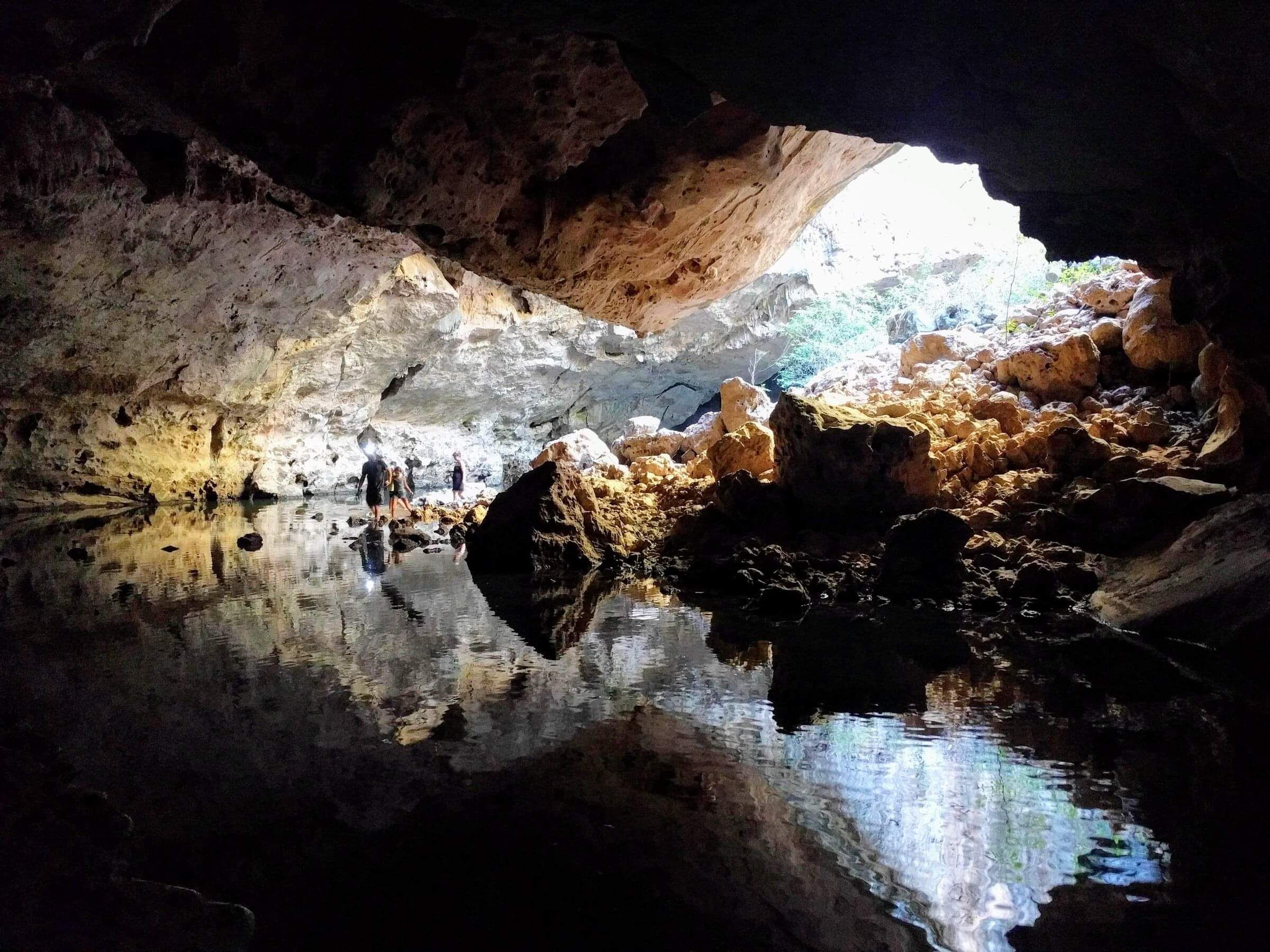
The dark and murky waters of Tunnel Creek.
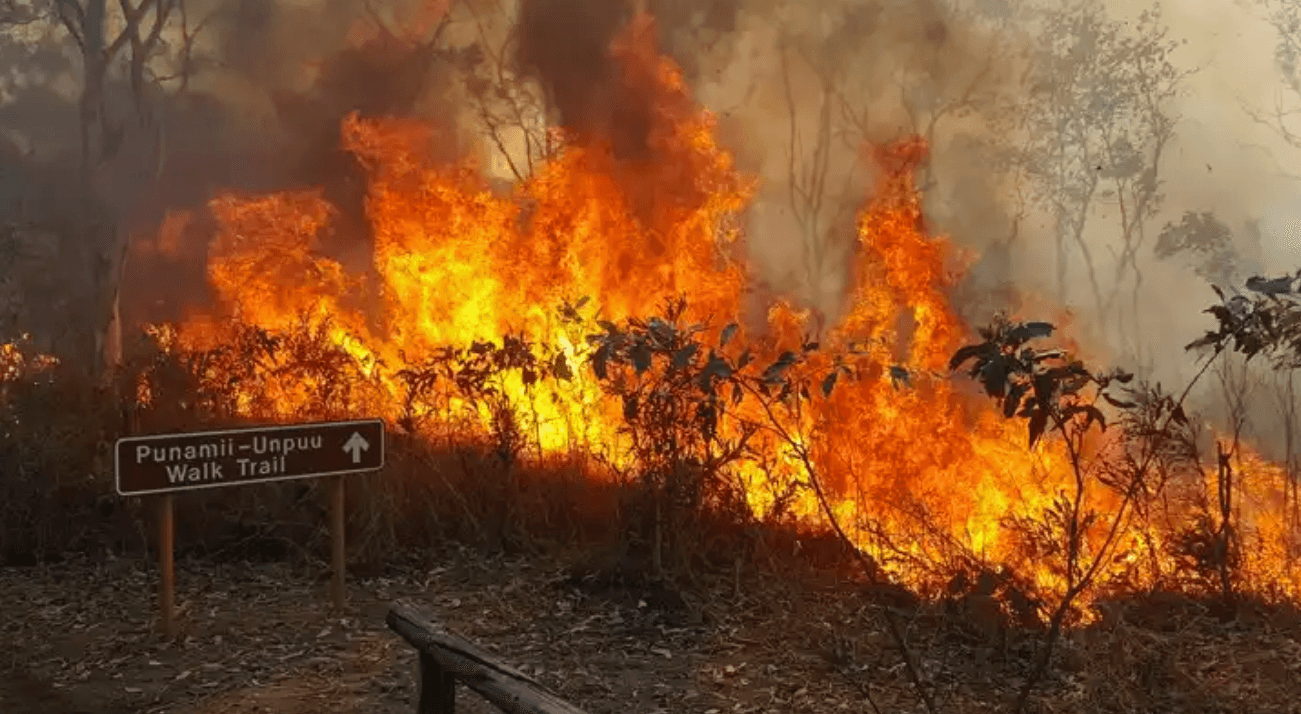
Fire on the Mitchell Plateau.
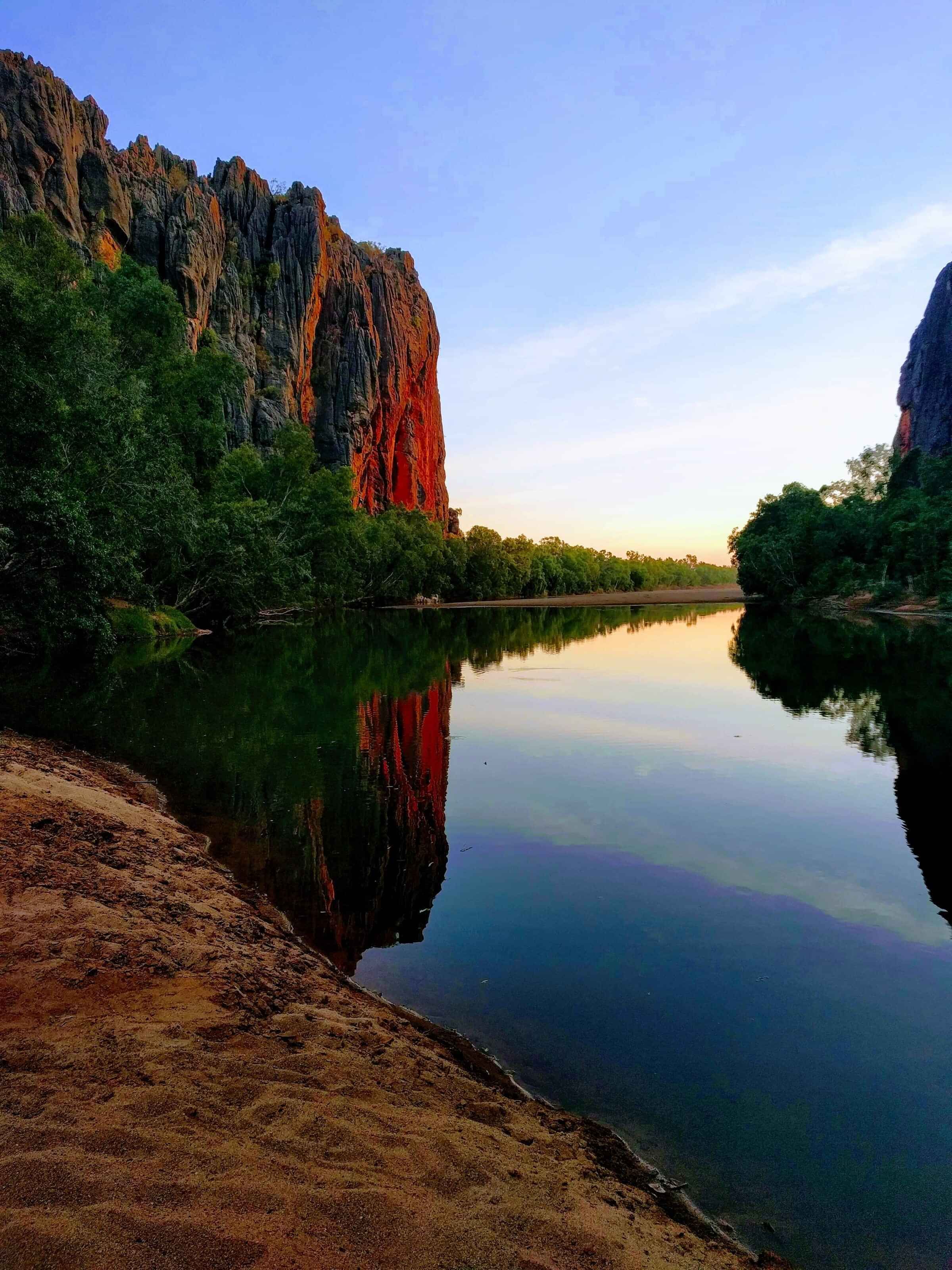
Sunset at Windjana Gorge.
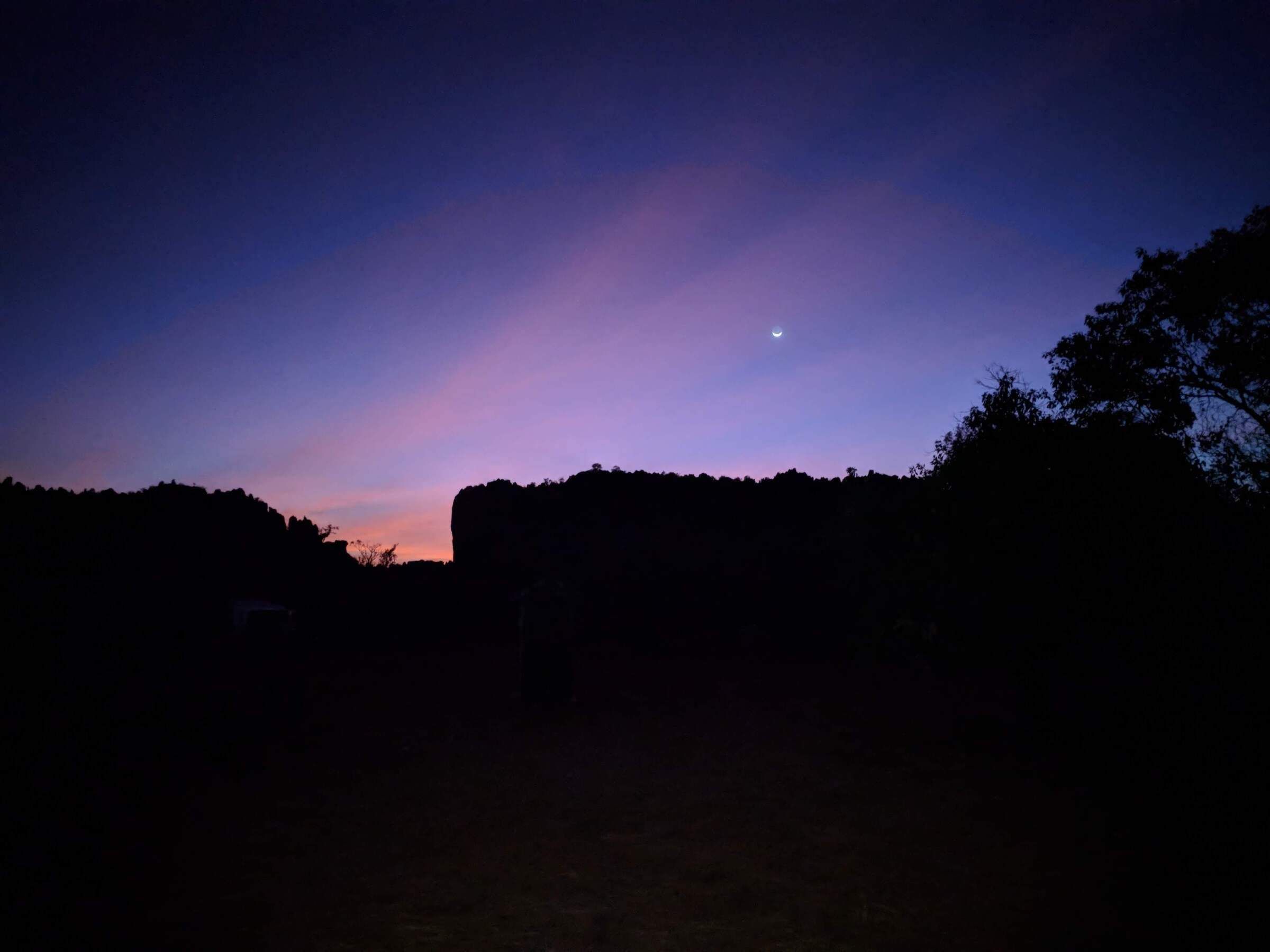
Daybreak Windjana Gorge.
Visit the Australian Outback.
I highly recommend visiting the Australian Outback.
- It is full of life and great characters.
- The scenery is vast and magnificent on a massive scale.
- The history is incredibly sad and full of conflict and hardship.
But it is a harsh landscape and unforgiving - You must be prepared well for any trip there.
